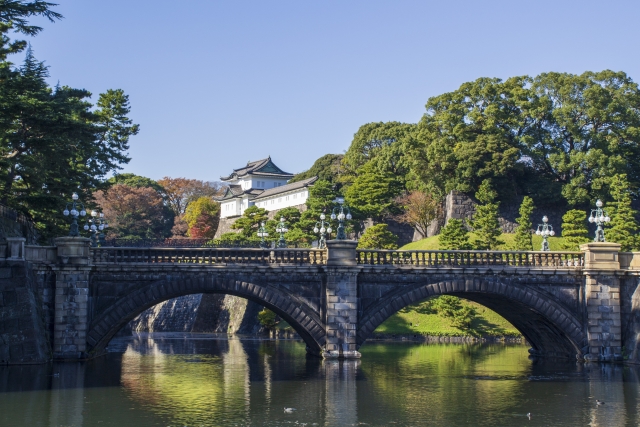Once a Mighty Military Fortress
Now the Residence of the Imperial Family
Business District closely associated with Mitsubishi
The area between Tokyo Station and the Imperial Palace is known as Marunouchi. It’s considered one of Japan’s top office districts, lacking residential areas, which leads to a significant difference in population between day and night. Historically quiet on weekends, redevelopment of high-rise buildings since 2000 has led to the addition of numerous commercial facilities on the lower floors, substantially increasing foot traffic during holidays.
During the Meiji era, this was barren land until Mitsubishi acquired it and modeled a business district after the City of London, leading to the concentration of Mitsubishi Group’s headquarters here. It also boasts numerous art museums.
Crossing the moat brings you to the Imperial Palace. In the Edo period, this area was the stronghold of the Tokugawa shogunate, known as Edo Castle. With the Meiji Restoration, the Emperor relocated here from Kyoto, transforming it into the Imperial Palace. Hence, remnants of its past as a military facility endure, visible in its moats, stone walls, and sturdy gates. The former residences of high-ranking officials now comprise the Imperial Palace Outer Gardens, offering views of lawns and beautiful pine trees. Exploring the Imperial East Gardens allows visitors to witness gardens and remnants of the castle.
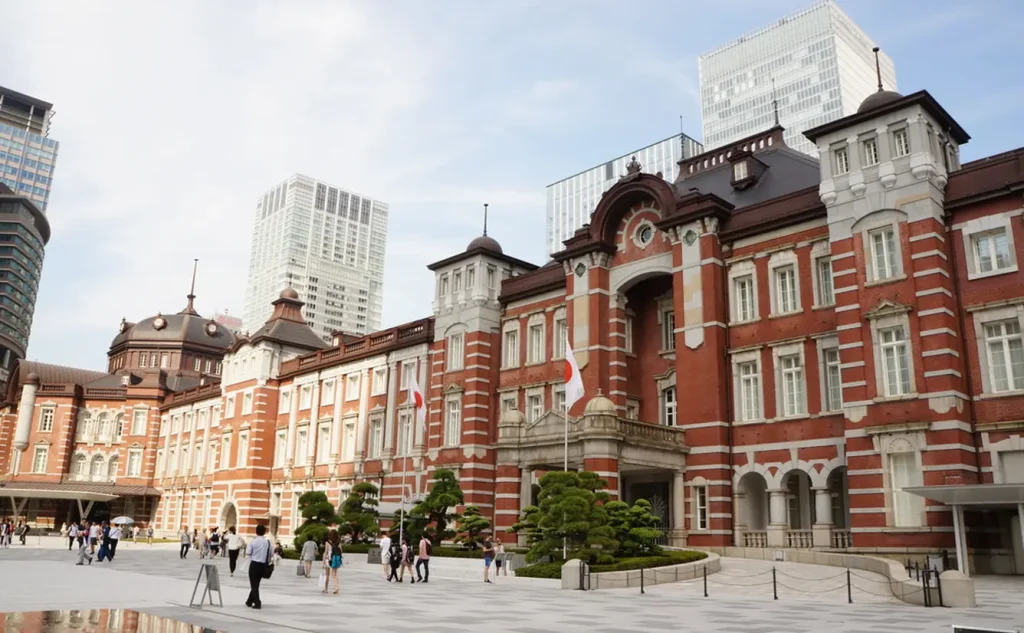
Tokyo Station: A terminal station that represents Tokyo, the capital city. The building is characterized by red brick and a rounded dome. Inside the station, numerous commercial facilities are available, along with a hotel.
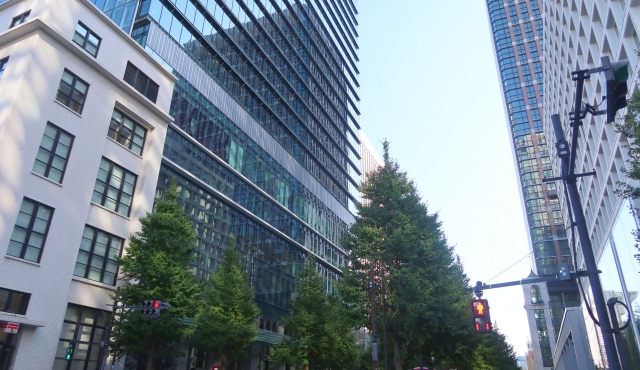
Marunouchi Area: Japan’s largest business district, housing the headquarters of the Mitsubishi Group. Historically, it was a residential area for high-ranking officials of the Edo Shogunate.
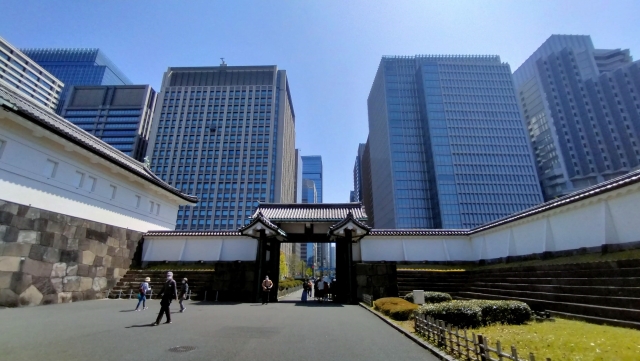
The cluster of buildings in Marunouchi seen from the former Edo Castle’s Otemon Gate.
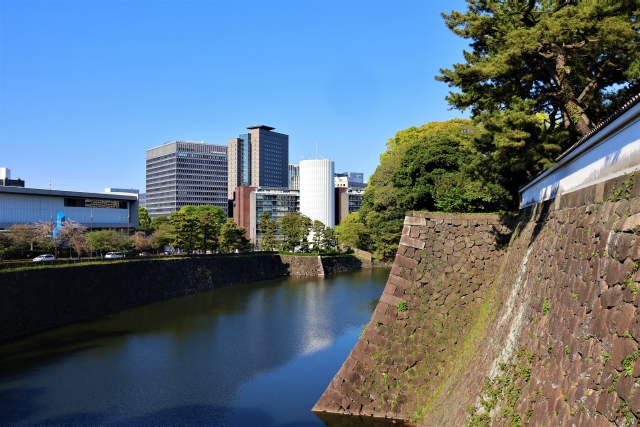
The Imperial Palace used to be Edo Castle. The moat and stone walls are stacked for defense against external threats.
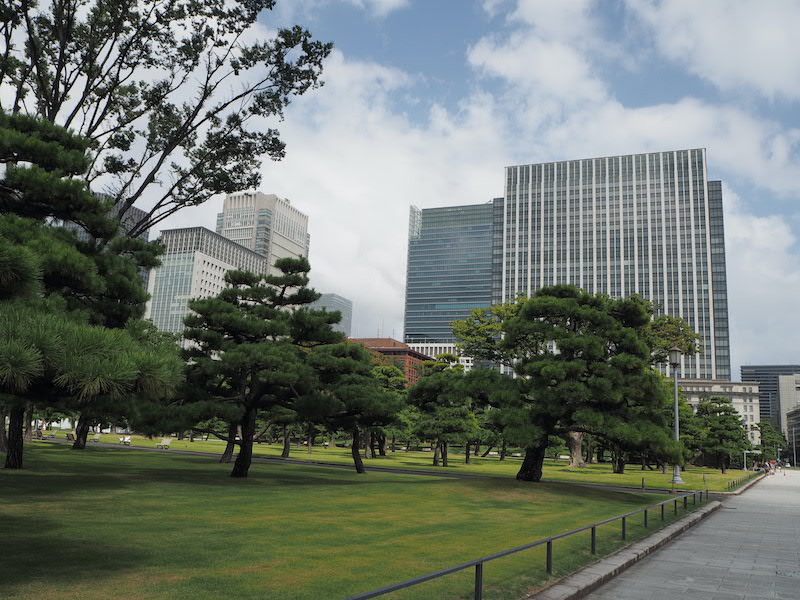
Outer Gardens of the Imperial Palace: It features lush lawns and beautifully planted pine trees.
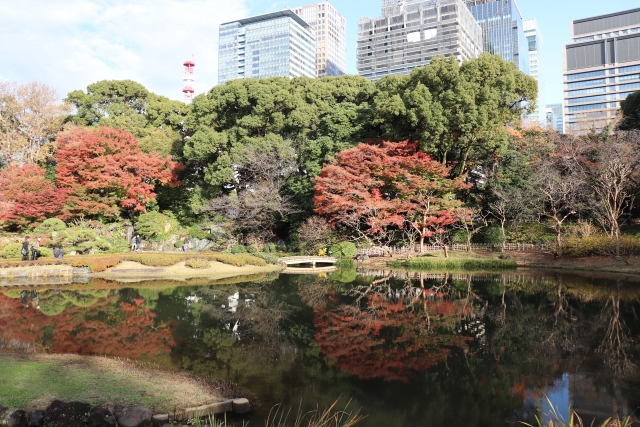
The Ninomaru Garden located in the East Gardens of the Imperial Palace. This garden was originally established within Edo Castle in 1630 and reconstructed in 1965. It offers a variety of plants and flowers for visitors to enjoy.

Carp(koi) in the pond of the Ninomaru Garden. They are rare koi resulting from a crossbreeding between Indonesian long-finned carp and Nishikigoi carp.
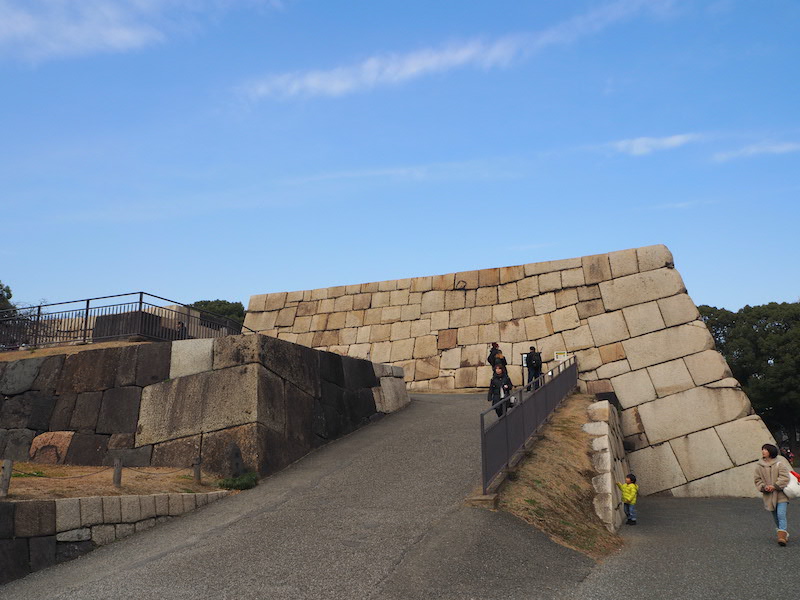
Once, a castle tower stood here, overlooking the streets of Edo. It wasn’t rebuilt after the Great Fire of 1657. Now, only its foundation remains

Nijubashi Bridge: One of the most famous photography spots in Tokyo. Usually, it’s not accessible for the general public to cross.

